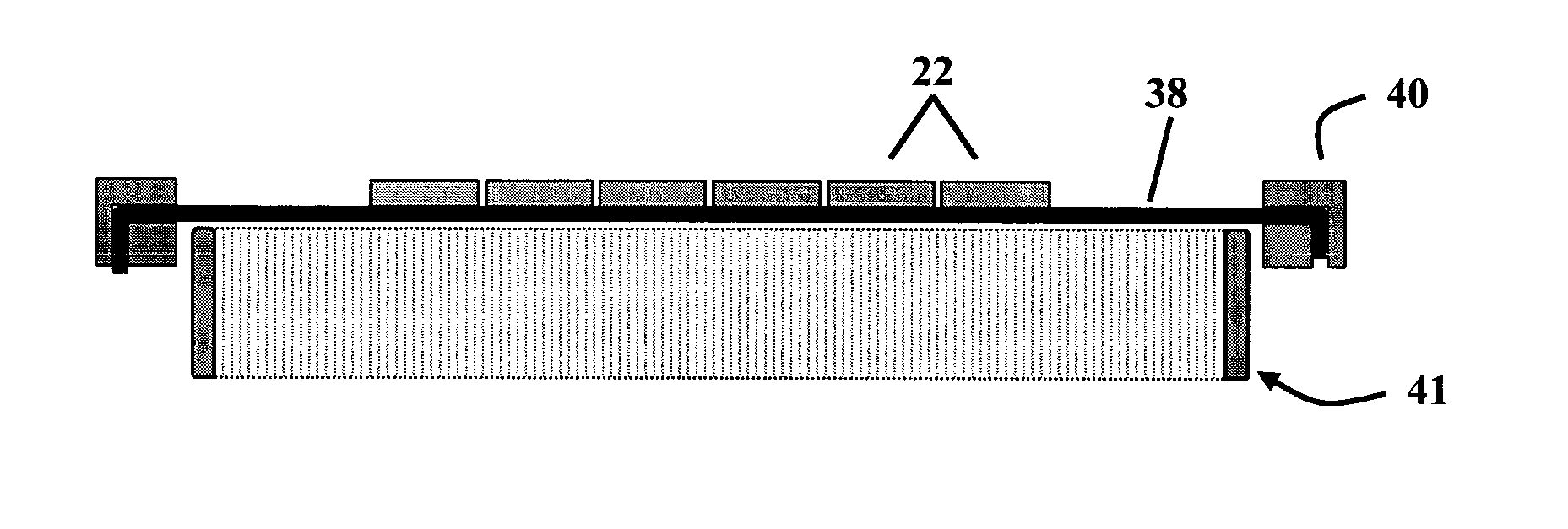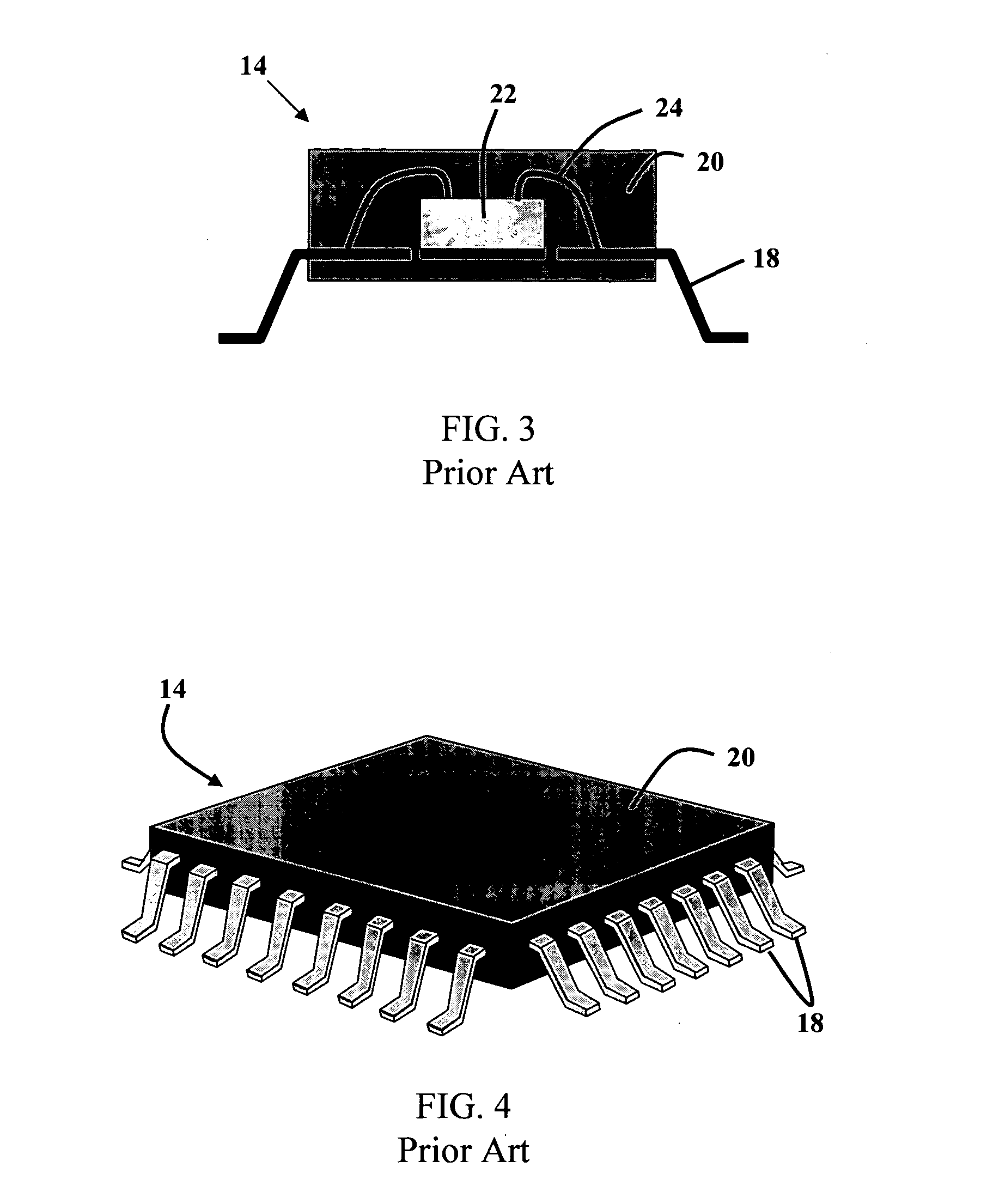Wafer-level assembly method for semiconductor devices
a technology of semiconductor devices and assembly methods, applied in semiconductor devices, semiconductor/solid-state device details, electrical devices, etc., can solve the problems of reducing the efficiency of wafer-level processing, reducing the cost savings of mass processing, and reducing the cost of mass processing. , the effect of reducing the cost of mass processing
- Summary
- Abstract
- Description
- Claims
- Application Information
AI Technical Summary
Benefits of technology
Problems solved by technology
Method used
Image
Examples
Embodiment Construction
[0041] Described, infra, are novel wafer-level processes that can be used to economically manufacture chip assemblies for multichip modules, component packages, and chip-on-board products. These methods enable semiconductor chips to be simultaneously bonded to a plurality of single chip packages. The method can also be used to pre-assemble chips into a die stack prior to assembling them in a multichip package or module. The method can also be used to simultaneously bond chips to printed circuit boards to greatly reduce manufacturing cost. This can be especially advantageous for producing radio frequency identification products, such as RFID tags, that are extremely cost-sensitive. Unlike prior wafer-level processes, my method allows a plurality of chips to be simultaneously bonded to an array of chips, to packages, or to printed circuit boards. Furthermore, a wafer comprising a plurality of chips can be assembled to other chips, packages, circuits, and the like, that have greater di...
PUM
 Login to View More
Login to View More Abstract
Description
Claims
Application Information
 Login to View More
Login to View More - R&D
- Intellectual Property
- Life Sciences
- Materials
- Tech Scout
- Unparalleled Data Quality
- Higher Quality Content
- 60% Fewer Hallucinations
Browse by: Latest US Patents, China's latest patents, Technical Efficacy Thesaurus, Application Domain, Technology Topic, Popular Technical Reports.
© 2025 PatSnap. All rights reserved.Legal|Privacy policy|Modern Slavery Act Transparency Statement|Sitemap|About US| Contact US: help@patsnap.com



